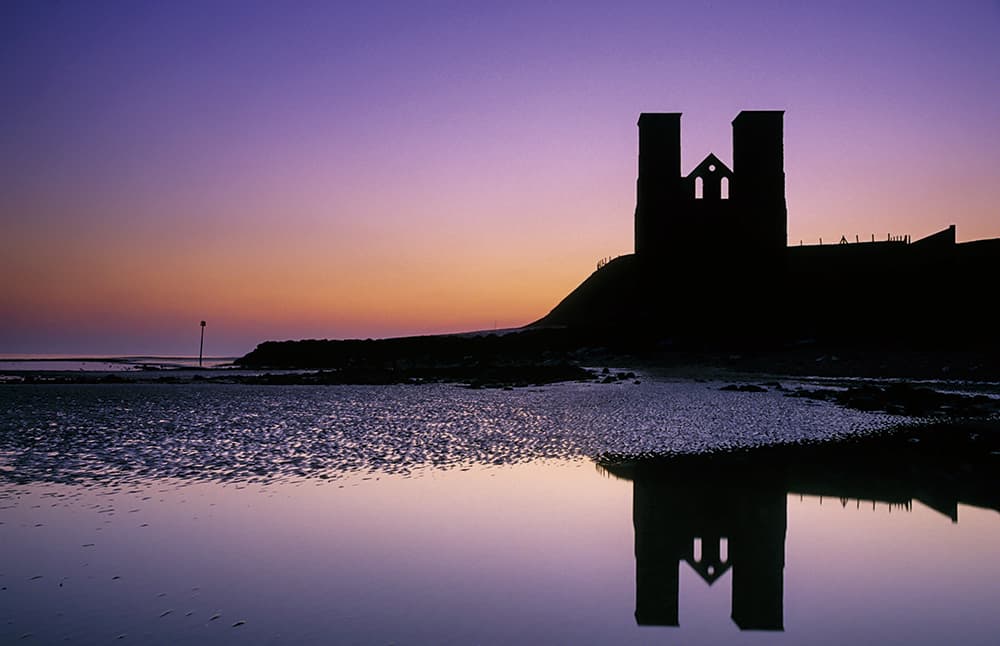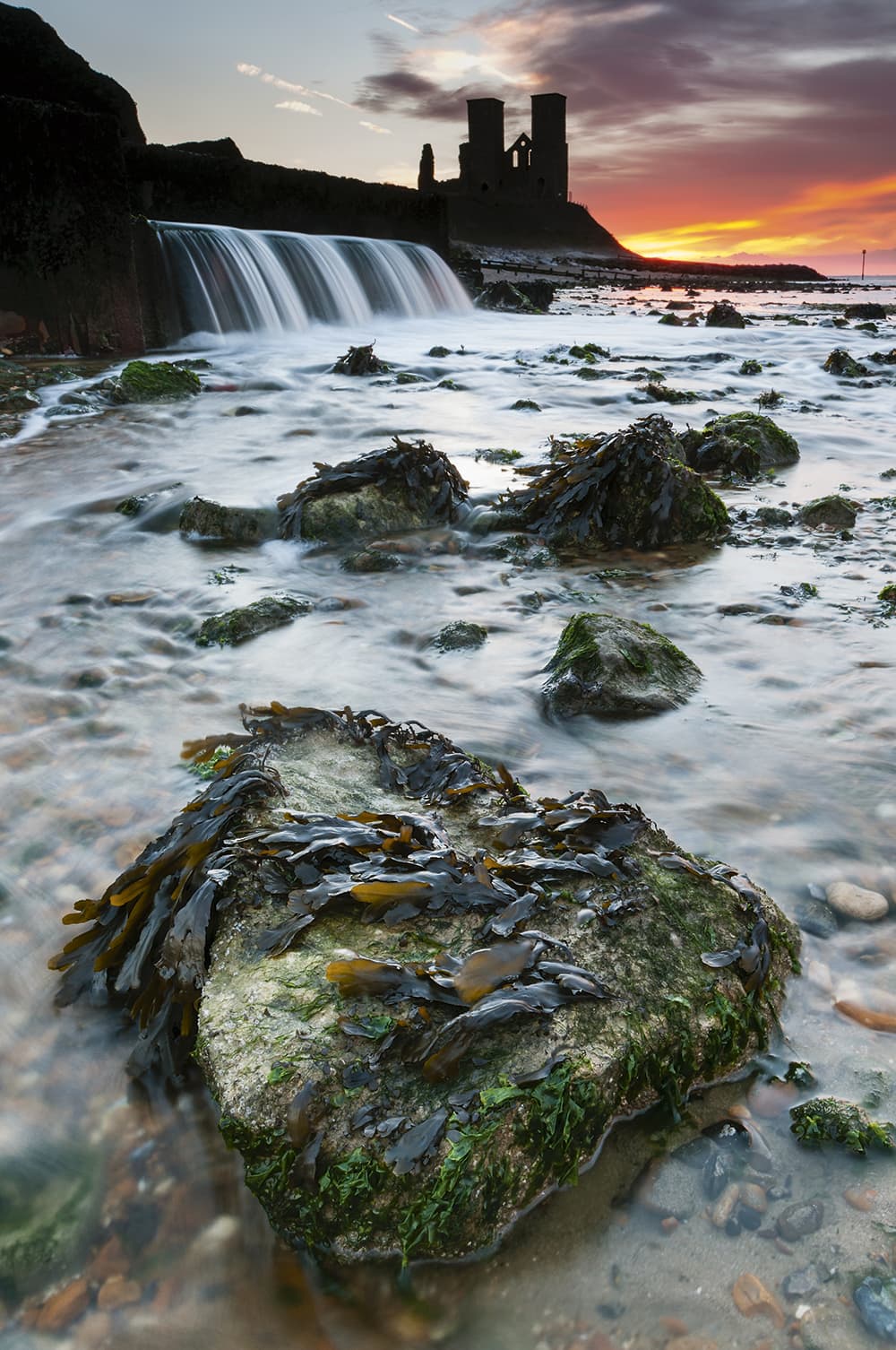Situated on the north Kent coast, in sight of Herne Bay to the west and Margate’s Turner Contemporary art gallery to the east, Reculver is an exposed stretch of beach and cliff where a delightful walk will lead you all the way to the famous fishing town of Whitstable in one direction, and to Birchington-on-Sea in the other. However, for photographers and the multitude of day-trippers who visit each year, the main attraction is the twin towers of the ruined 12th century monastic church that once stood there. A Roman fort originally held the position, and when you are there, standing on the very spot it once stood, you can see why such a strategic location was chosen, affording clear 360° views.
The adjacent, and now silted up, River Wantsum was originally up to two miles wide and separated the mainland county of Kent and the Isle of Thanet, providing a major shipping route from the English Channel to the Thames estuary. Now, just a few metres wide, the channel can be seen inland as you walk along the sea towards Birchington.
Reculver really is a wonderful site to explore, with so much to offer the photographer at any time of the year, from landscapes and rock-pool close-ups, to butterflies, flowers and birds. It is this sheer diversity that entices me back time and again.
Shooting advice
Time to visit
Knowledge of the tides will stand you in good stead as you don’t want to arrive with the intention of shooting on the beach during an incoming tide, especially when you are backed up against the cliffs. There are plenty of websites that will give you up to seven days of tide times, and if you can coincide low tide with either sunrise or sunset, you will have access to Reculver’s beach.
Either end of the day will provide innumerable opportunities. A calm dawn with wispy clouds is hard to beat, and if you visit in late summer, the sun rises directly next to the towers, which are then illuminated by the setting sun later in the day. I like to work on the beach a couple of hours prior to sunset among the rock pools and lugworm casts, shooting towards the towers. As the pink light of sunset turns to the blue of twilight, I’ll walk to the opposite side of the towers and, perhaps, use the outflow (Kent’s very own waterfall!) as an aid to provide foreground interest.
There’s a large car park on the sea front, and given its location and elevated position you can do as much or as little walking as you choose. Even from the car park you can capture the towers and beach below, but if you want to get down among the rock pools on the beach you will need to walk in the region of half a mile return.
Food and lodging
Situated right next to the car park, The King Ethelbert Inn is the perfect place to refresh yourself or escape the biting wind that goes hand in hand with a winter’s walk on the north Kent coast. They also do a fantastic Sunday roast.
Kit list
Filters
You will find a polarising filter, ND and ND grad filters useful. All have their advantages, but if I were to
pick one it would be ND grads to reduce the exposure difference between the sky and beach.
Tripod
If you want to take advantage of shooting during periods of low light, such as at dawn and dusk, then a tripod (used in conjunction with a cable release) is an essential piece of kit that will reward you with consistently sharp images.
Wellingtons
Something as simple as a pair of wellies will increase your choice of shooting angles immensely. Without them you’ll be tiptoeing between rock pools; with them, you can position yourself wherever you like.
Robert Canis has been a professional nature photographer for more than 20 years. He is represented by several international agencies and regularly leads wildlife and landscape workshops. www.robertcanis.com










